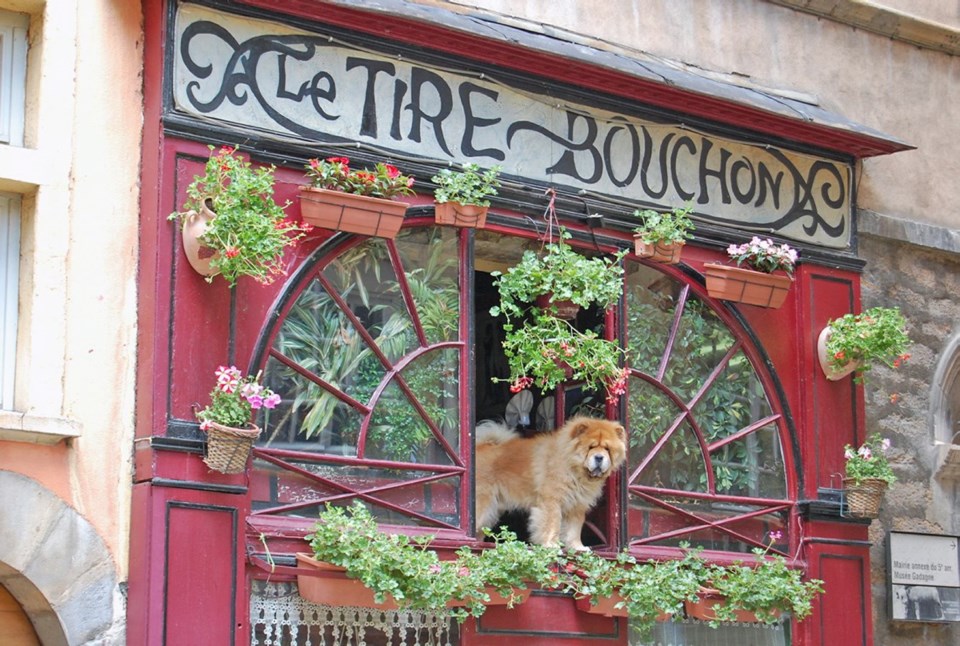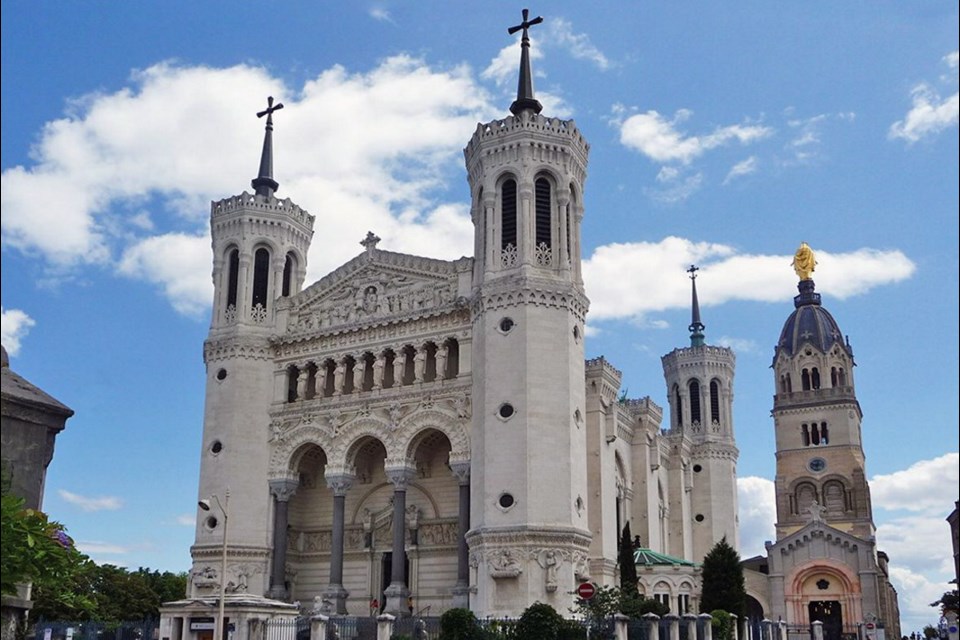Smartly situated Lyon — just south of Burgundy, north of Provence, east of the Alps and centred on a peninsula at the convergence of two major rivers — has long been a major cultural hub. But its enjoyable cityscape is refreshingly untouristy, despite its welcoming old town, classy shops, worthwhile museums and renowned cuisine. Just two hours from Paris by train, Lyon makes an easy one- or two-night stopover.
Lyon’s sights are concentrated in three areas: historic Vieux Lyon (the old town, on the bank of the Saône River); the Presqu’île (the peninsula between the Saône and the Rhône), and Fourvière Hill, with its white Notre-Dame Basilica glimmering above the city.
I would start my first Lyon sightseeing day with a funicular ride up Fourvière Hill — where the city was founded as Lugdunum by the Romans in 43 B.C. From the Fourvière terrace, you can take in a commanding view of Lyon’s old town, with its Renaissance roofs sporting uniform chimneys, and the Presqu’île’s elegant 19th-century architecture.
The hill’s landmark is the gleaming Notre-Dame Basilica, built in the late 1800s. Inside this ornate building, everything is covered with elaborate, gleaming mosaics telling stories of the Virgin Mary. Next to the basilica, a chapel that predates the church by 500 years is capped by a gold statue of Mary overlooking the city.
A short walk from the basilica is the Lugdunum Gallo-Roman Museum, built on the hillside, with views of two Roman theatres. You hear the term “Gallo-Roman” a lot in Lyon. As they established their vast empire, the Romans conquered the Gauls and incorporated them into their culture. For several centuries, this substantial part of the Roman Empire was a Gaulish, or Gallo-Roman, civilization.
In the museum you’ll see Roman artifacts, including coins, tools, amphorae (jugs), and a tablet inscribed with a speech given by Emperor Claudius in 48 AD. Outside the museum are a big theatre, built under the reign of Emperor Augustus and still used today for concerts, and a smaller theatre, acoustically designed for speeches and songs.
Back down the hill, Vieux Lyon offers the best concentration of well-preserved Renaissance buildings in France — vestiges of Lyon’s Golden Age when it was the centre of Europe’s silk industry. Pedestrian-friendly lanes — punctuated by picturesque squares and courtyards — are made for ambling, window-shopping, and café lingering. On Rue du Boeuf, silk purveyor Brochier Soieries displays a binary-code “computerized” weaving loom and silkworm exhibit.
The many traboules (covered passageways) in Vieux Lyon once protected unfinished silk goods from the elements. They also worked as shortcuts, connecting the old town’s three main north-south streets. Today, traboules provide a hide-and-seek opportunity to discover pastel courtyards, lovely loggias and delicate arches.

After an exploration of Vieux Lyon, visitors have a fun assortment of museums to choose from. In a Renaissance mansion named for a wealthy merchant family, the Gadagne Museums offer two exhibits for one ticket price — a city history museum and a puppetry museum. The Museum of Fine Arts, in a former abbey on the Presqu’île, has an impressive collection, ranging from Egyptian antiquities to Impressionist paintings. Its inner courtyard is a pleasant place to take a peaceful break from city streets. Also on the Presqu’île are the Museums of Textiles and Decorative Arts, filling two buildings and sharing a courtyard.
On the east bank of the Rhône, the Resistance and Deportation History Centre explains the clever strategies Lyon’s Resistance members used to fight the Nazis during the Second World War, and the Lumière Museum is dedicated to the Lumière brothers’ pivotal contribution to film. Nearby, Les Halles food market is crammed with butchers, fishmongers, pastry specialists, cheese shops and colourful produce stands, with food stands and mini restaurants mixed in.
Dining is one of the premier attractions in Lyon, regarded by many as France’s foodie mecca. Compared with Paris, the value is good. Here, great chefs are more famous than professional soccer players. Lyon’s characteristic bouchons are small bistros that evolved from the time when Mama would feed the silk workers after a long day. The lively pedestrian streets of Vieux Lyon and Rue Mercière on the Presqu’île are bouchon bazaars, worth strolling, even if you dine elsewhere. Though food quality may be better away from these popular restaurant rows, you can’t beat the atmosphere.
After dinner, I like to go for a stroll to savour the city’s illuminations. While Paris may call itself the “City of Light,” Lyon is a leader in urban lighting design and hosts conventions on the topic. Each night, more than 200 buildings, sites, and public spaces are gloriously floodlit.
When I travel outside Paris, I’m struck by all the wonders there are to enjoy in France. Lyon provides an elegant French urban scene, with no hint of crass tourism.
Rick Steves writes European travel guidebooks and hosts travel shows on TV and radio. Email him at rick@ricksteves.com and follow his blog on Facebook.



